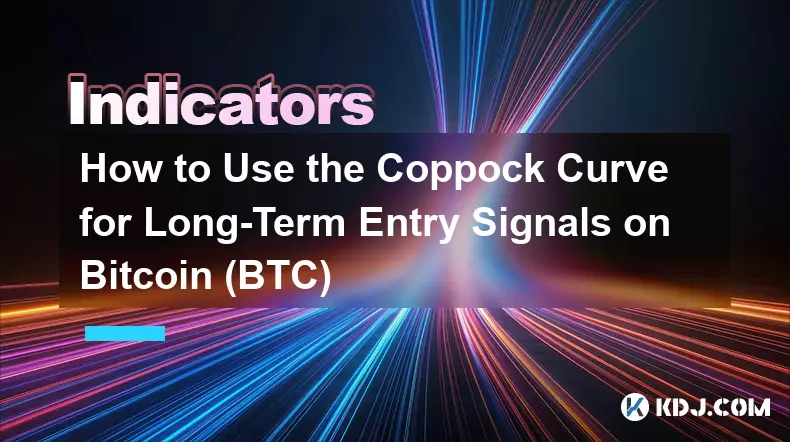-
 bitcoin
bitcoin $99177.955738 USD
-7.32% -
 ethereum
ethereum $3187.183061 USD
-12.38% -
 tether
tether $0.999809 USD
0.00% -
 xrp
xrp $2.117933 USD
-9.42% -
 bnb
bnb $906.710033 USD
-9.17% -
 solana
solana $149.367737 USD
-10.74% -
 usd-coin
usd-coin $0.999816 USD
0.01% -
 tron
tron $0.281498 USD
-0.38% -
 dogecoin
dogecoin $0.156292 USD
-8.00% -
 cardano
cardano $0.500744 USD
-10.19% -
 hyperliquid
hyperliquid $38.087358 USD
-4.58% -
 chainlink
chainlink $14.097831 USD
-8.54% -
 bitcoin-cash
bitcoin-cash $463.329916 USD
-9.22% -
 ethena-usde
ethena-usde $0.999078 USD
-0.01% -
 unus-sed-leo
unus-sed-leo $9.475862 USD
-0.79%
Setting a Stop-Loss with the Average True Range (ATR) Indicator for Solana (SOL)
ATR helps Solana traders set dynamic stop-loss levels based on volatility, improving risk management during SOL’s rapid price swings.
Oct 29, 2025 at 04:37 am

Understanding the Average True Range (ATR) in Solana Trading
1. The Average True Range (ATR) is a volatility-based technical indicator that measures market volatility by decomposing the complete range of an asset’s price over a specific period. For Solana (SOL), which often experiences sharp price movements due to high market sentiment and network activity, ATR provides traders with a dynamic way to assess how much the price typically moves within a given timeframe.
2. Unlike directional indicators, ATR does not predict price trends but focuses solely on volatility. This makes it particularly useful for setting stop-loss levels that adapt to current market conditions rather than relying on fixed percentages or support/resistance zones that may become outdated during rapid shifts.
3. Traders commonly use a 14-period ATR setting, which calculates the average true range across 14 candles—whether they are hourly, four-hourly, or daily. When applied to Solana, this helps capture recent volatility patterns influenced by events such as protocol upgrades, exchange listings, or macroeconomic news affecting crypto markets.
4. High ATR values indicate increased volatility, suggesting that wider stop-loss levels may be necessary to avoid premature exits caused by normal price swings. Conversely, low ATR readings imply tighter price ranges, allowing for more precise and closer stop placements without risking unnecessary liquidation from minor fluctuations.
Calculating Stop-Loss Levels Using ATR for SOL
1. To set a stop-loss using ATR, traders first identify the current ATR value on their chosen chart timeframe. For example, if the 14-period ATR on the 4-hour chart shows 2.50 USD, this means Solana has been moving an average of $2.50 per candle over the past 14 periods.
2. A common strategy involves multiplying the ATR value by a multiplier—typically between 1.5 and 3—depending on risk tolerance and trading style. A conservative trader might use 1.5 x ATR, while an aggressive approach could apply 2.5 x ATR to account for extreme volatility bursts typical in SOL's price action.
3. For a long position entered at $150 with an ATR of $2.50 and a multiplier of 2, the stop-loss would be placed $5 below the entry point ($2.50 x 2 = $5), resulting in a stop at $145. This ensures the stop accounts for natural noise in Solana’s price movement without being too tight.
4. In fast-moving markets, especially during major news events or whale transactions involving large volumes of SOL, ATR expands rapidly. Adjusting stops dynamically based on updated ATR readings helps maintain alignment with real-time volatility, reducing the chance of being stopped out by short-term spikes.
Integrating ATR-Based Stops into Risk Management Strategies
1. Position sizing should be adjusted according to the distance between entry and the ATR-derived stop level. If the calculated stop requires a larger-than-usual risk per trade, reducing position size ensures consistent risk exposure across all trades, even when volatility increases.
2. Combining ATR-based stops with on-chain metrics such as exchange outflows or active address growth can enhance decision-making. For instance, rising volatility (high ATR) alongside growing network usage may justify wider stops, anticipating sustained momentum rather than temporary noise.
3. Day traders focusing on Solana may prefer shorter ATR periods like 7 or 10 to react quickly to intraday swings, whereas swing traders holding positions for several days benefit from standard 14-period ATR on higher timeframes to filter out irrelevant noise.
4. Backtesting ATR stop strategies on historical Solana price data reveals how well this method performs during different market regimes—ranging from consolidation phases to parabolic rallies seen during bull runs or NFT ecosystem expansions on the Solana blockchain.
Frequently Asked Questions
How often should I update my ATR-based stop-loss?You should reassess your ATR-based stop-loss each time a new candle closes, especially on lower timeframes where volatility changes rapidly. Updating after every close ensures your stop remains aligned with current market dynamics.
Can ATR be used for take-profit levels too?Yes, some traders use multiples of ATR to set trailing take-profits. For example, a 3x ATR distance from entry can serve as a dynamic profit target that adjusts as volatility evolves, helping lock in gains during strong trending moves in SOL.
Does ATR work effectively during low-volume periods for Solana?During low-volume periods, ATR tends to contract, reflecting reduced price movement. While this allows tighter stops, caution is needed because sudden volume surges can cause quick expansions in ATR, triggering stops unexpectedly. Monitoring volume alongside ATR improves reliability.
Is ATR suitable for both long and short positions in SOL?Absolutely. Whether going long or short, ATR provides symmetrical volatility measurement. For short entries, subtract the ATR multiple from the entry price; for longs, add it below. The mechanism works identically in both directions, making it versatile across trading strategies.
Disclaimer:info@kdj.com
The information provided is not trading advice. kdj.com does not assume any responsibility for any investments made based on the information provided in this article. Cryptocurrencies are highly volatile and it is highly recommended that you invest with caution after thorough research!
If you believe that the content used on this website infringes your copyright, please contact us immediately (info@kdj.com) and we will delete it promptly.
- XRP ETF Race Heats Up: FTI Filing Sparks November Launch Buzz
- 2025-11-05 18:45:01
- Crypto's US Liquidity Crisis: Bitcoin's Wild Ride and What's Next
- 2025-11-05 19:00:02
- Bybit, Block Scholes, and Crypto Derivatives: Navigating the Evolving Landscape
- 2025-11-05 19:10:01
- MARA Dumps, Bitcoin Pullback End? Decoding the Crypto Market's Latest Moves
- 2025-11-05 19:45:01
- Bitcoin Dip? Time to Buy Bitcoin, Maybe!
- 2025-11-05 19:45:01
- Crypto ETFs, Bitcoin, and Solana: A New York Minute on Shifting Tides
- 2025-11-05 19:50:01
Related knowledge

Using TradingView for crypto: essential tips and tools for chart analysis.
Nov 05,2025 at 04:30am
Mastering Chart Types on TradingView1. Selecting the right chart type is crucial for accurate crypto analysis. The default candlestick chart remains a...

Technical analysis for crypto: using RSI and MACD to find trading signals.
Nov 03,2025 at 03:18pm
Decentralized Exchanges Are Reshaping Trading Dynamics1. Decentralized exchanges (DEXs) have gained significant traction by eliminating intermediaries...

Reading crypto charts for beginners: understanding candlestick patterns.
Nov 05,2025 at 02:55am
Introduction to Candlestick Charts in Crypto Trading1. Candlestick charts are one of the most widely used tools in cryptocurrency trading, offering vi...

The Best Exponential Moving Average (EMA) Settings for Crypto Swing Trading
Oct 25,2025 at 04:55pm
The Best Exponential Moving Average (EMA) Settings for Crypto Swing TradingSwing trading in the cryptocurrency market relies heavily on identifying tr...

How to Use the Coppock Curve for Long-Term Entry Signals on Bitcoin (BTC)
Oct 31,2025 at 03:01pm
Understanding the Coppock Curve in Bitcoin Analysis1. The Coppock Curve is a momentum indicator originally designed for stock market indices but has f...

A Beginner's Guide to Finding Divergence with the MACD on the Solana (SOL) Chart
Oct 26,2025 at 12:36pm
Understanding MACD and Its Role in Solana Trading1. The Moving Average Convergence Divergence (MACD) is a momentum indicator widely used in cryptocurr...

Using TradingView for crypto: essential tips and tools for chart analysis.
Nov 05,2025 at 04:30am
Mastering Chart Types on TradingView1. Selecting the right chart type is crucial for accurate crypto analysis. The default candlestick chart remains a...

Technical analysis for crypto: using RSI and MACD to find trading signals.
Nov 03,2025 at 03:18pm
Decentralized Exchanges Are Reshaping Trading Dynamics1. Decentralized exchanges (DEXs) have gained significant traction by eliminating intermediaries...

Reading crypto charts for beginners: understanding candlestick patterns.
Nov 05,2025 at 02:55am
Introduction to Candlestick Charts in Crypto Trading1. Candlestick charts are one of the most widely used tools in cryptocurrency trading, offering vi...

The Best Exponential Moving Average (EMA) Settings for Crypto Swing Trading
Oct 25,2025 at 04:55pm
The Best Exponential Moving Average (EMA) Settings for Crypto Swing TradingSwing trading in the cryptocurrency market relies heavily on identifying tr...

How to Use the Coppock Curve for Long-Term Entry Signals on Bitcoin (BTC)
Oct 31,2025 at 03:01pm
Understanding the Coppock Curve in Bitcoin Analysis1. The Coppock Curve is a momentum indicator originally designed for stock market indices but has f...

A Beginner's Guide to Finding Divergence with the MACD on the Solana (SOL) Chart
Oct 26,2025 at 12:36pm
Understanding MACD and Its Role in Solana Trading1. The Moving Average Convergence Divergence (MACD) is a momentum indicator widely used in cryptocurr...
See all articles










































































